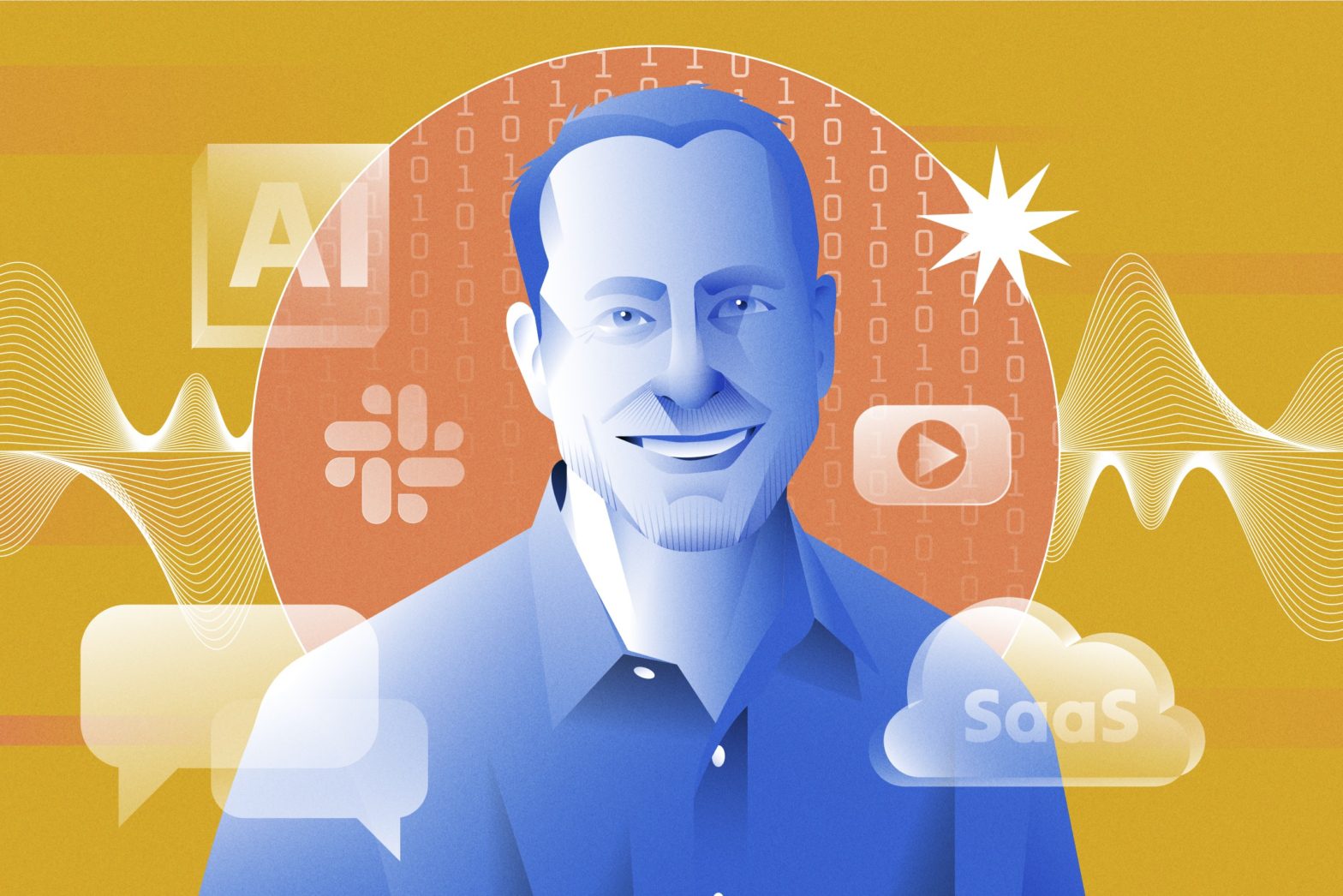Slack’s First CMO Bill Macaitis on Modernizing B2B Marketing in the AI Era

The Evolution of B2B Marketing
Coming from B2C to leading marketing at Salesforce, Zendesk, and Slack, what key shifts did you introduce to B2B marketing?
It was an incredible journey. At both Zendesk and Slack, I joined as the first CMO and built the marketing teams from the ground up. My approach focused on bringing in a modern tech stack and a fresh way to grow, drawing from my consumer-side experience. After 15 years in B2C before moving to Salesforce and Slack, I observed that many B2B companies, even in the software space, were operating from an outdated playbook centered around press releases, events, and top-down selling.
We needed to make our go-to-market strategy as innovative as our product. This meant incorporating the best elements from B2C: virality loops, freemium models, brand building, product-led growth, SEO, and content marketing. At the time, these approaches weren’t common in B2B SaaS, where most companies relied primarily on outbound sales and top-down selling into organizations.
This perspective was shaped by my early entrepreneurial experience. Starting my first company in the B2C gaming space after college, with no venture capital, taught me invaluable lessons about capital efficiency. When you have limited resources, you must think creatively about growing your company efficiently and sustainably. I carried this mindset throughout my career, always asking: how can we accelerate growth while improving efficiency and scalability?
Customer-Centric Marketing: From Theory to Practice
At Slack, you emphasized customer experience and word of mouth. How did this approach develop?
My marketing philosophy has two core elements: modern go-to-market strategy and customer centricity. This perspective comes from experiencing both sides of the industry. During my B2C years, I witnessed how short-term thinking could lead to practices that prioritized immediate metrics over customer experience. When I transitioned to B2B and began purchasing software to build a modern tech stack, I encountered the limitations of traditional B2B buying experiences.
The typical enterprise software purchase journey was filled with friction. Websites required extensive form submissions before providing basic information. Sales teams engaged prematurely. After purchase, customers often received minimal support. These companies would then ask for referrals, despite delivering a subpar experience.
How did you implement customer-centricity at Slack?
Slack’s emoji reactions went through 30 versions to get the user experience right
At both Zendesk and Slack, joining early – when they had around 50-75 employees – provided an opportunity to implement a truly customer-centric approach from the ground up. We fundamentally changed how we measured success by implementing three core company-level metrics at Slack: daily active users, Net Promoter Score, and ARR. Two of these three were customer-centric metrics, which was unusual at the time.
We built workflows in Slack to make these metrics actionable. When someone gave us a low NPS score, that information would automatically route to their customer success manager, account executive, and support team. We also asked open-ended questions about why they gave that score, allowing us to tally the top reasons for both high and low scores.
These insights directly influenced our product roadmap. We found customers often wanted features to be simpler and easier to use, not just new functionality. For example, Slack’s emoji reactions went through 30 versions to get the user experience right – something many companies would have shipped after version one and moved on to the next feature.
Beyond tracking scores, we embedded customer satisfaction into sales. After any interaction with a sales person, we’d survey the prospect: How helpful were they? How knowledgeable? How responsive? Even if they bought Slack, we wanted to ensure they had a good experience throughout the process.
How should marketing engage throughout the customer lifecycle?
Marketing should span the entire customer lifecycle. The traditional B2B model where marketing only handles top-of-funnel lead generation creates systemic problems. It leads to tension with sales teams receiving unqualified leads and burdens customer success teams with misaligned customers.
Considering that approximately half of B2B SaaS revenue comes from existing customer expansion – whether through add-ons, upgrades, or usage-based pricing – marketing must play a crucial role post-purchase. Marketing teams excel at building scalable systems and automated programs. While sales and customer success teams often engage in valuable one-on-one interactions, marketing can create systematic approaches to nurture and educate customers through targeted content.
Our most successful content resonated equally with prospects and existing customers. We found customers were eager to learn about best practices, see how other customers were using the product, and understand broader industry trends.
Modern Marketing Strategy: Rethinking Traditional Models
What are your views on time-to-value and traditional freemium approaches in B2B?
Time-to-value is a critical metric in product-led growth. Traditional B2B software often requires extensive setup periods – sometimes up to three months before customers see their first value moment. This creates significant friction in the adoption process. Modern companies need to measure and optimize the time it takes for customers to achieve their first meaningful outcome, whether measured in months, days, hours, or even clicks.
The traditional B2B approach to free trials often results in what I term “CRIPPLEWARE” – severely limited functionality that prevents users from experiencing genuine value. Many enterprise companies restrict trials to a handful of features or impose strict time limitations. This approach fundamentally misunderstands the freemium model’s potential.
Instead, we advocate for opening up full feature access with thoughtful usage thresholds. This allows potential customers to experience the complete product value while maintaining clear upgrade paths based on usage patterns rather than artificial feature limitations.
How does this philosophy translate into pricing and expansion strategies?
At Slack, we implemented a fair billing policy – automatically adjusting charges and providing refunds when team members stopped using the product. This would have been challenging to implement at a larger, established company, but building from an early stage allowed us to align our pricing with actual value delivery.
This approach extends beyond pricing to overall go-to-market strategy. When you have pockets of free users within an enterprise, the conversation about expanding to a company-wide deployment becomes much more natural. The product has already proven its value, making the enterprise sales process more efficient and customer-centric.
The key is building systems that scale. Enterprise sales traditionally relies heavily on individual relationships and high-touch interactions. By complementing these with systematic marketing approaches – automated nurture programs, educational content, and usage-based expansion triggers – we can create more predictable growth patterns while maintaining customer satisfaction.
AI and the Future of Marketing
How is AI transforming marketing teams and their capabilities?
Marketing has emerged as the leading adopter of AI across organizational functions. We’re seeing transformative applications across every aspect of marketing operations. The marketing technology stack is rapidly evolving with AI integration across attribution analysis through tools like Dream Data and Factors AI, creative development using Midjourney and Adobe Firefly, and video creation with platforms like Runway and Pictory.
For content creation and distribution, we’re using tools like Opus Pro for video editing – it can analyze long-form content and automatically identify the best moments for short-form content. Buffer handles cross-platform social media distribution, while Rev.com manages transcription needs. These tools enable small teams to achieve what previously required entire departments.
What opportunities do you see emerging for marketing teams in the AI era?
AI is democratizing marketing capabilities. Five years ago, running a comprehensive content operation required a full team handling social media, transcriptions, captions, and video editing. Today, a small team or even an individual can manage this entire workflow using AI tools. This transformation isn’t just about efficiency – it’s enabling new forms of personalization and engagement that weren’t previously possible at scale.
The next frontier involves AI agents working in concert. Companies like OpenAI and Anthropic are developing systems where multiple AI agents can collaborate – imagine dedicated agents handling demand generation, creative work, ad buying, and brand management, all coordinating seamlessly.
One particularly exciting development is outcome-based pricing for AI solutions. Instead of traditional user-based pricing, companies can charge based on actual delivered outcomes – whether that’s generating images, resolving support tickets, or improving pipeline metrics. This approach better aligns with value delivery and could disrupt traditional B2B SaaS pricing models.
Final Thoughts
What advice would you give to marketers navigating this transformation?
The best career advice I received is increasingly relevant in the AI era: “It doesn’t matter if you’re employed or not. What matters is if you’re employable.” Success in modern marketing requires continuous adaptation and skill development. The landscape is evolving rapidly, and staying current with new technologies and approaches is crucial.
How do you stay current with industry developments?
I read AI research papers and follow industry developments. For learning on the go, I rotate through about 130 podcasts. The AI Marketing Institute podcast helps me track how AI is reshaping marketing practices.
YouTube has become part of my learning routine. Beyond creating content for SaaS CMO Pro, I use it to keep up with industry trends. The All-In Podcast, featuring discussions with VCs about emerging technologies, provides good perspective on where things are heading.
For more insights on modern B2B marketing approaches, follow Bill’s newsletter at SaasCMOPro.com

Personalization in the Age of AI: a conversation with David Edelman
Where David discusses the key messages of his book, and why now is the right time for companies to embrace personalization.